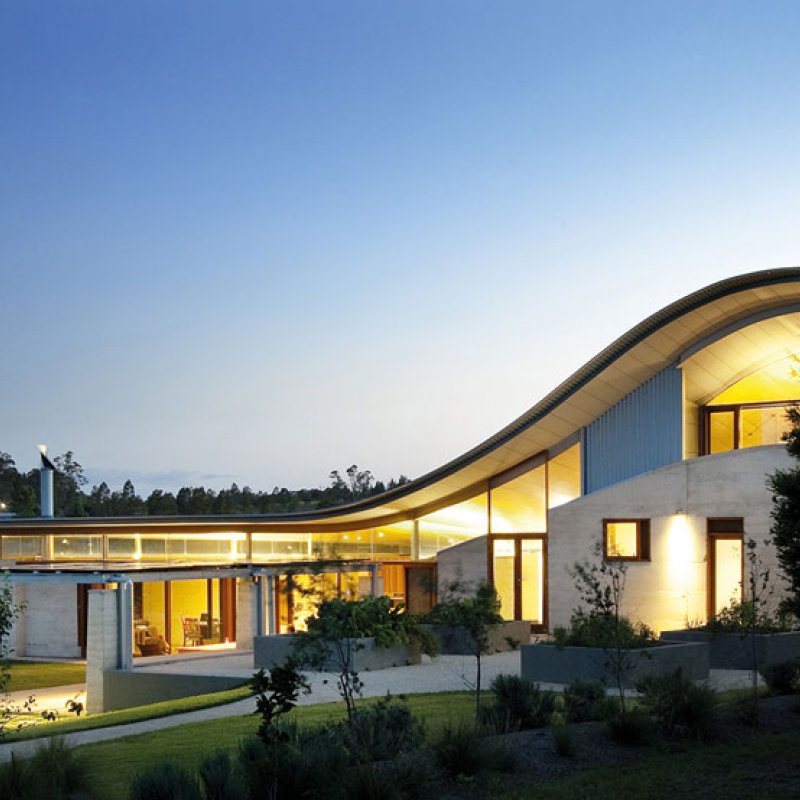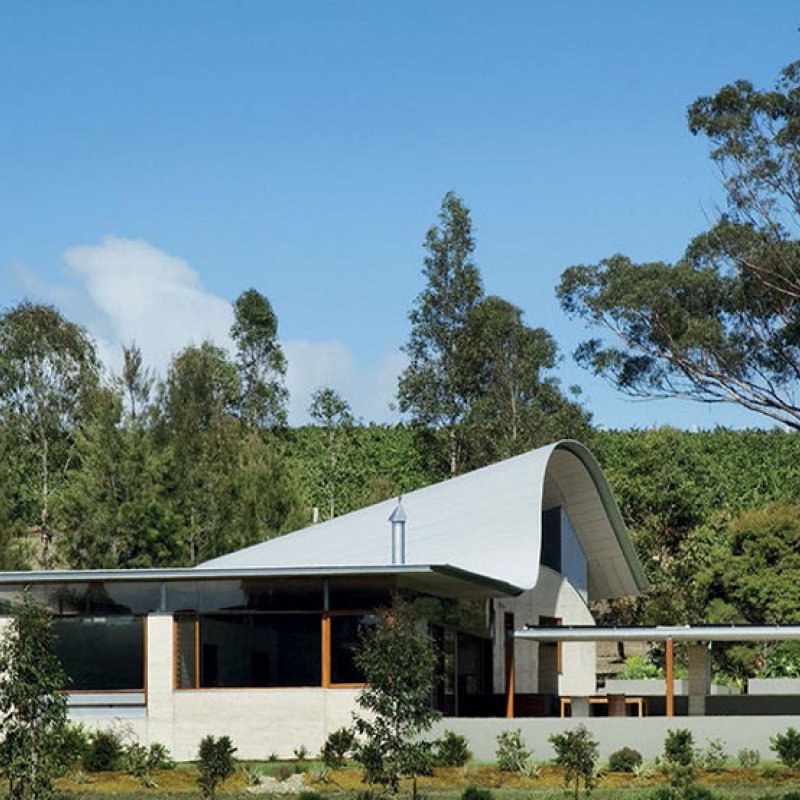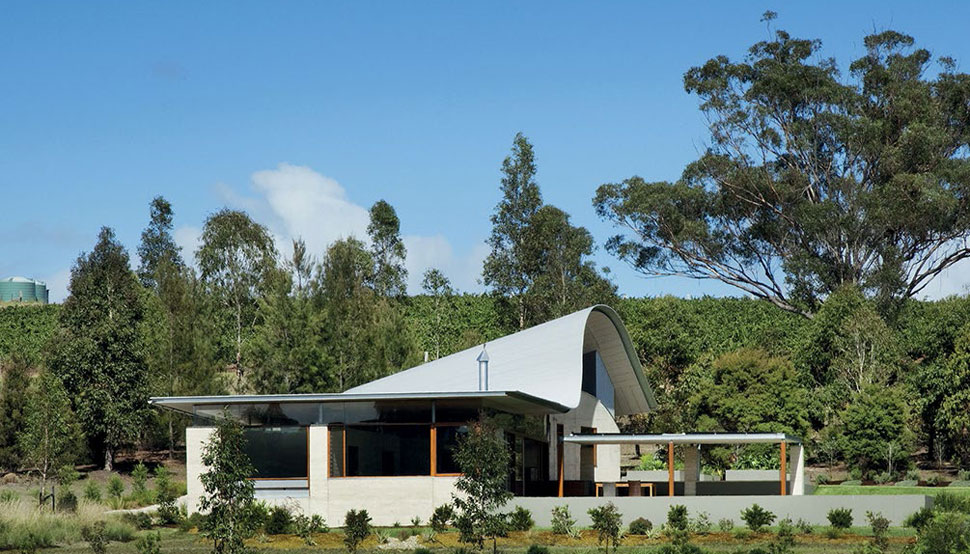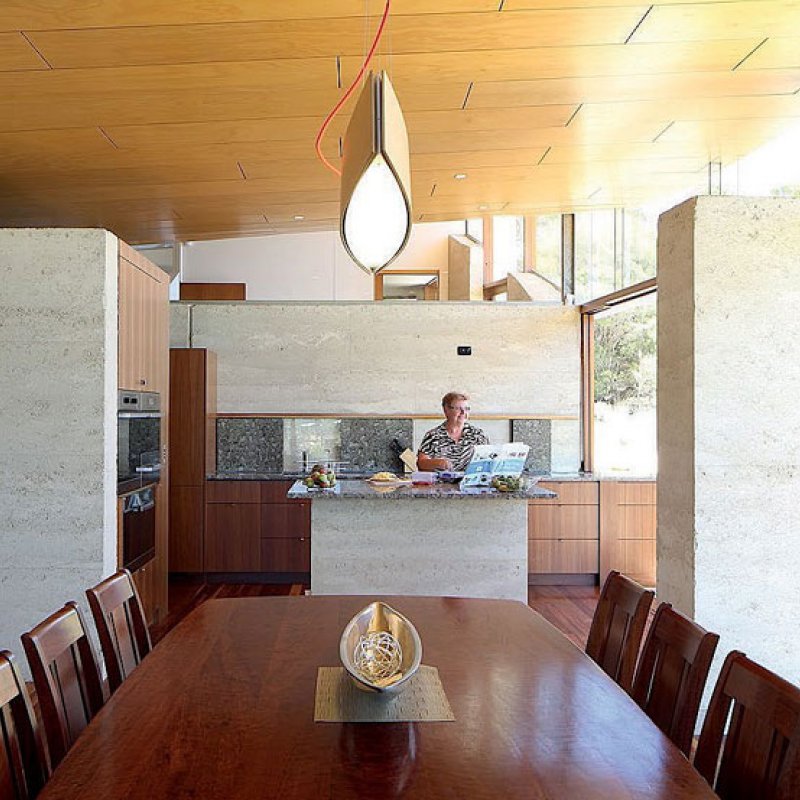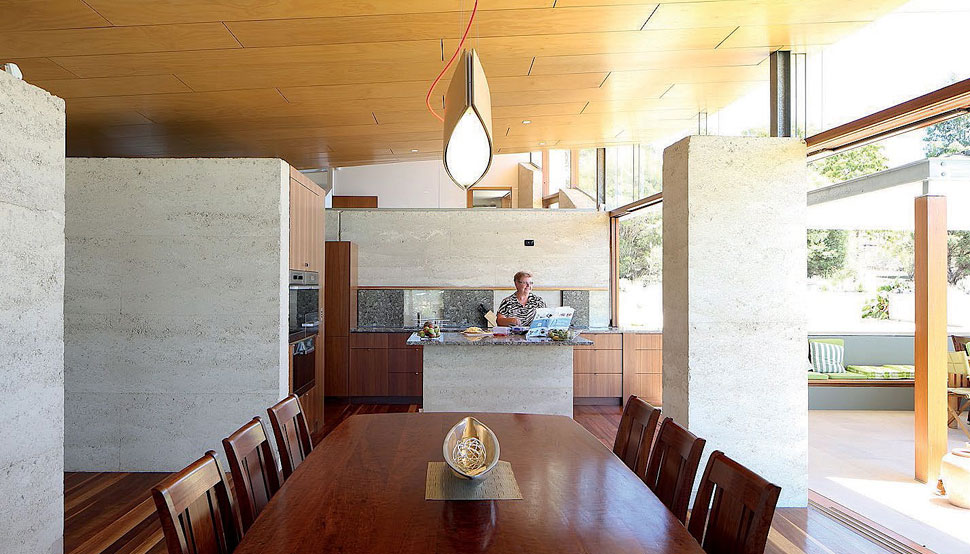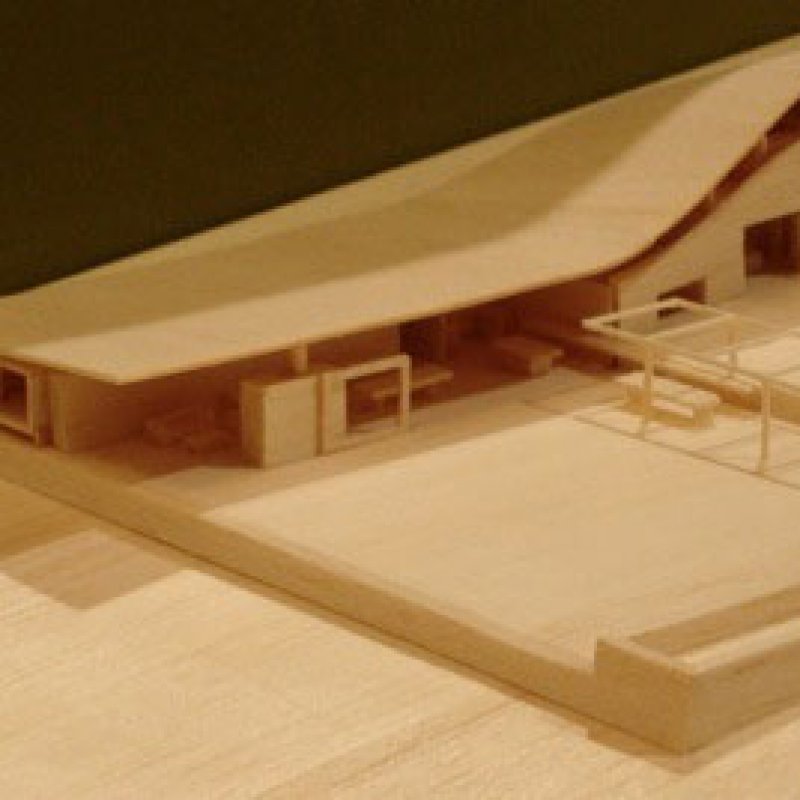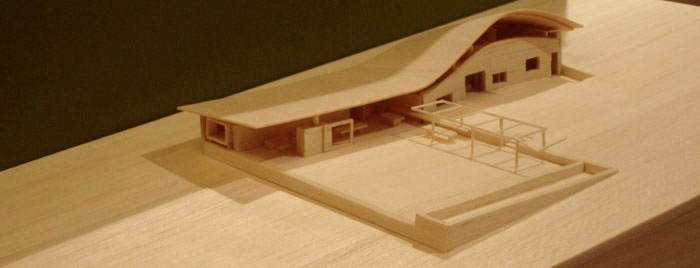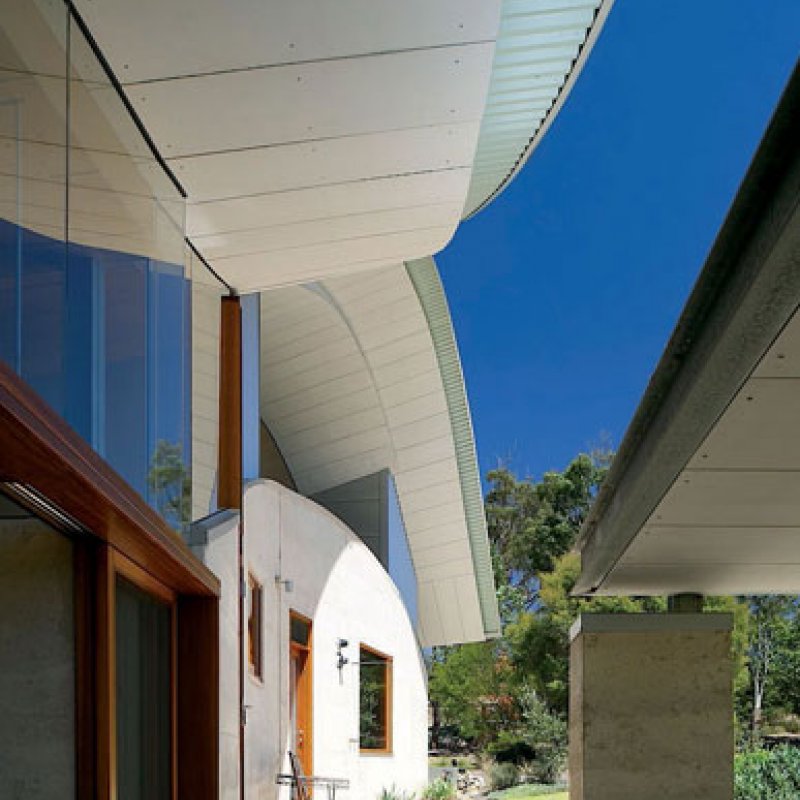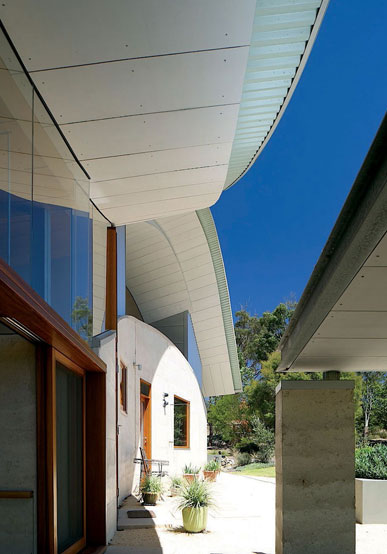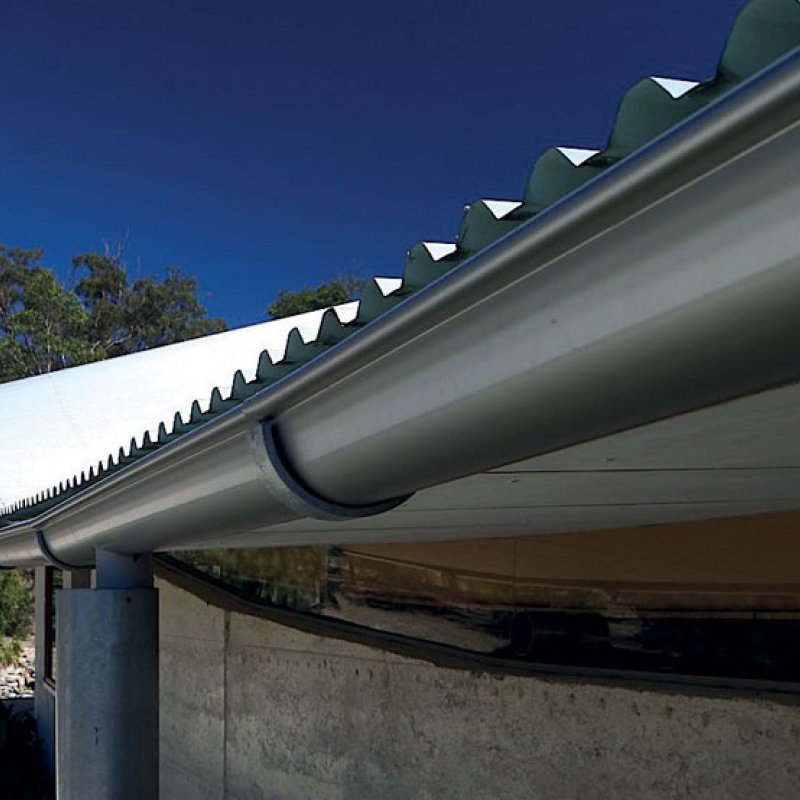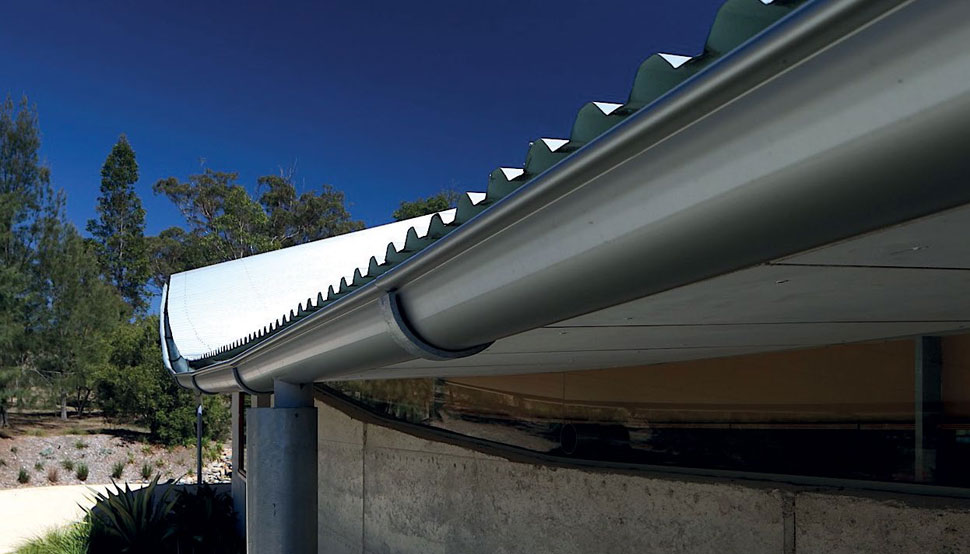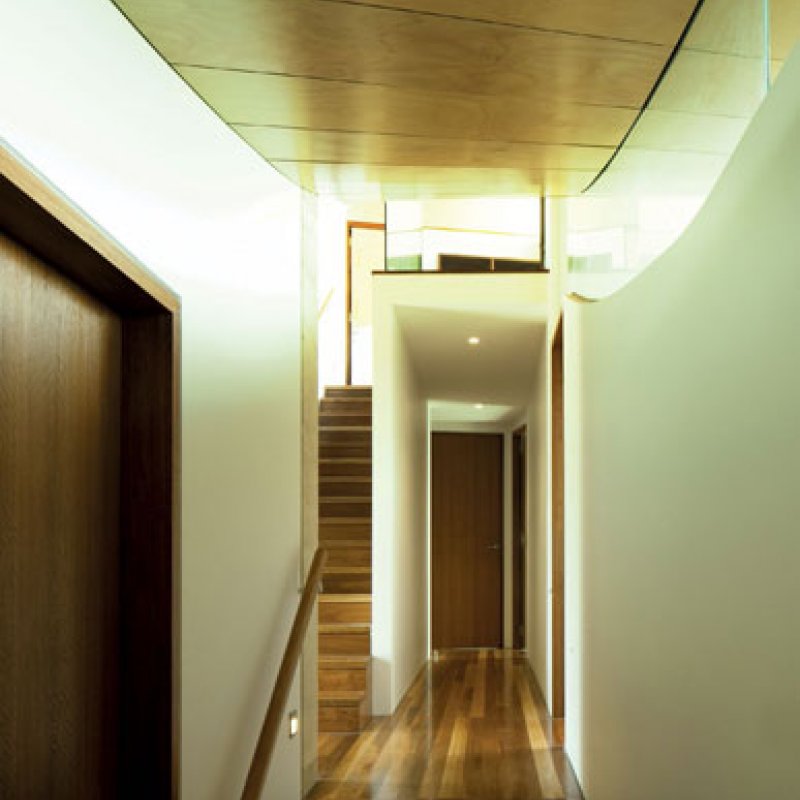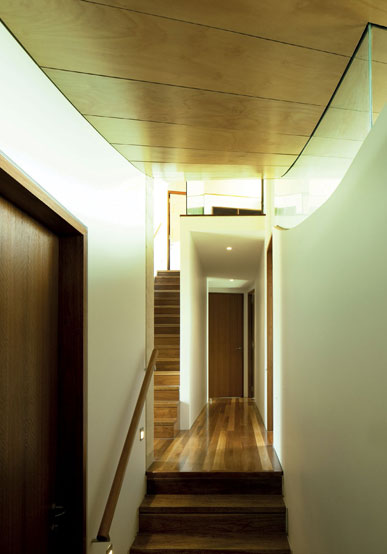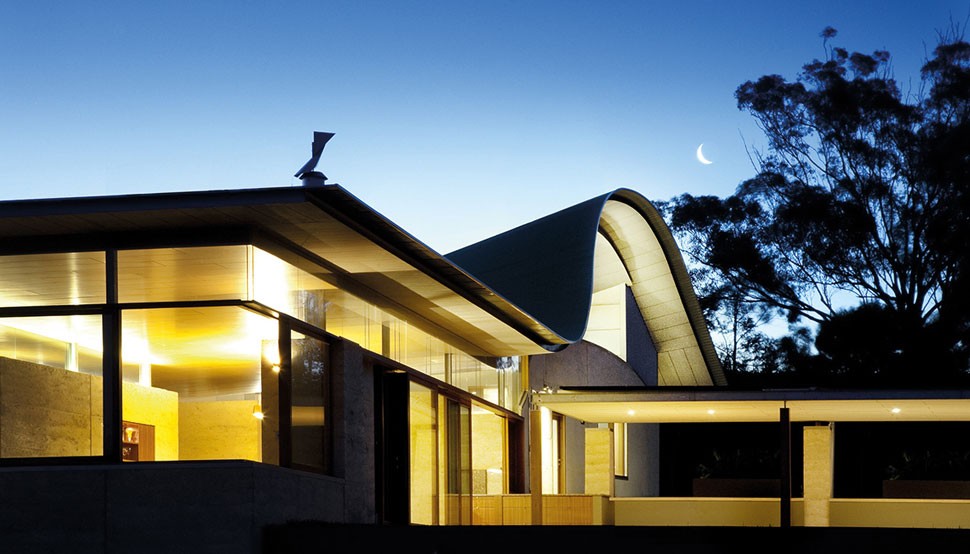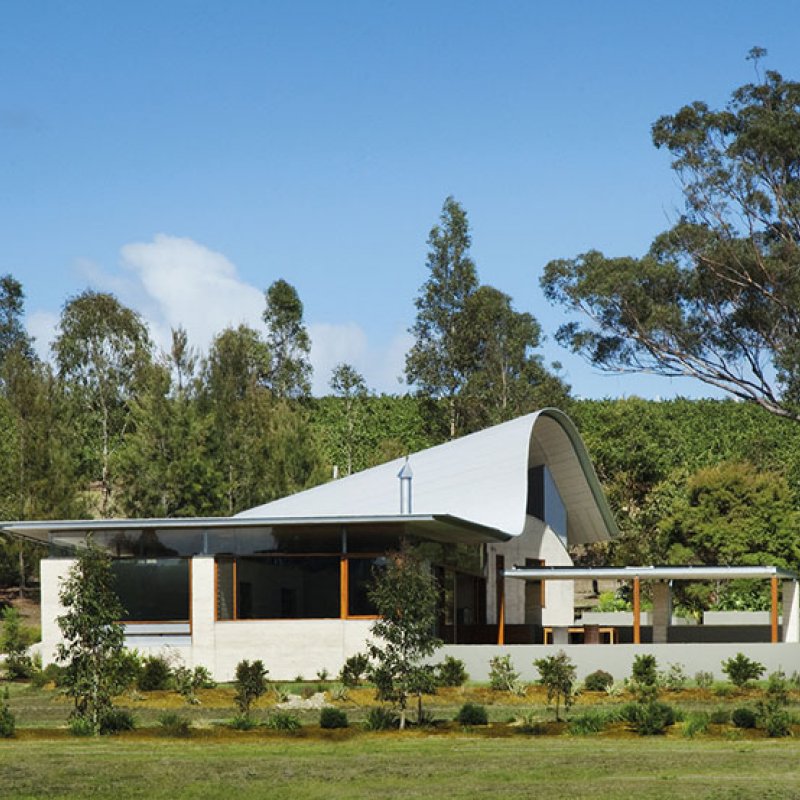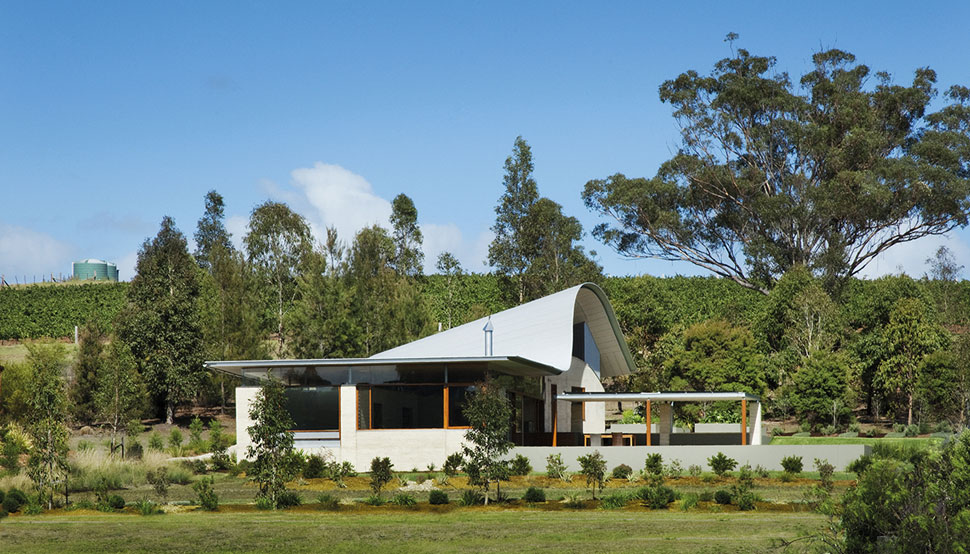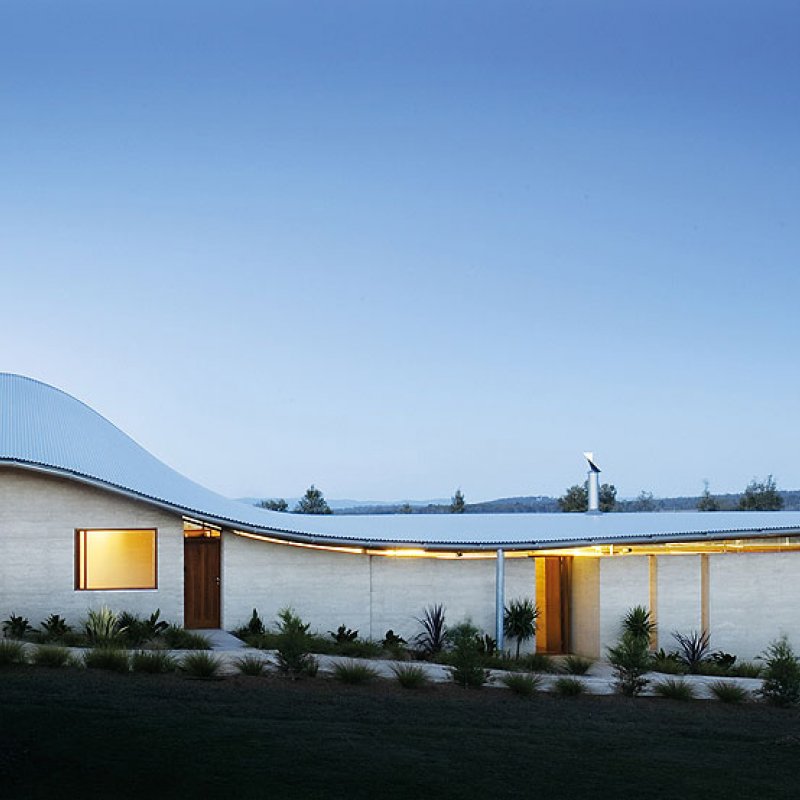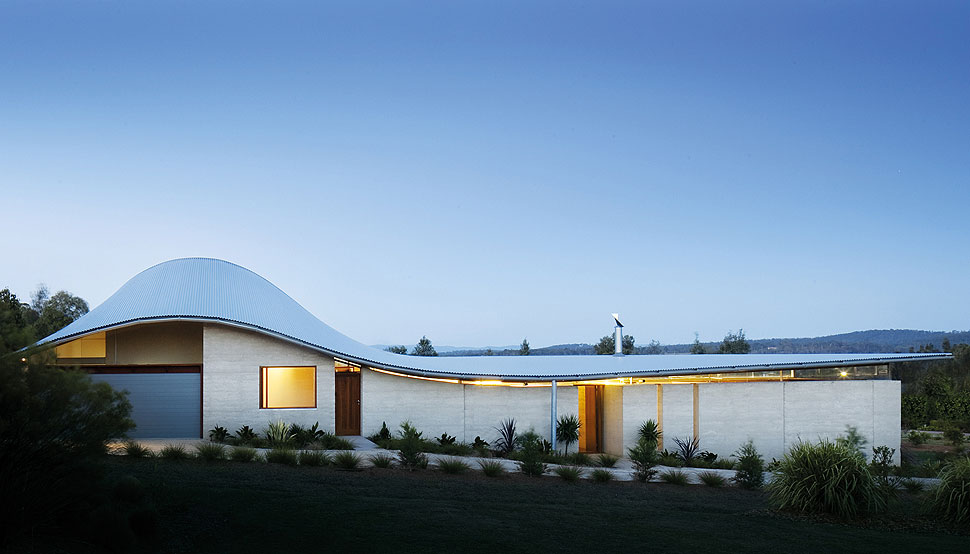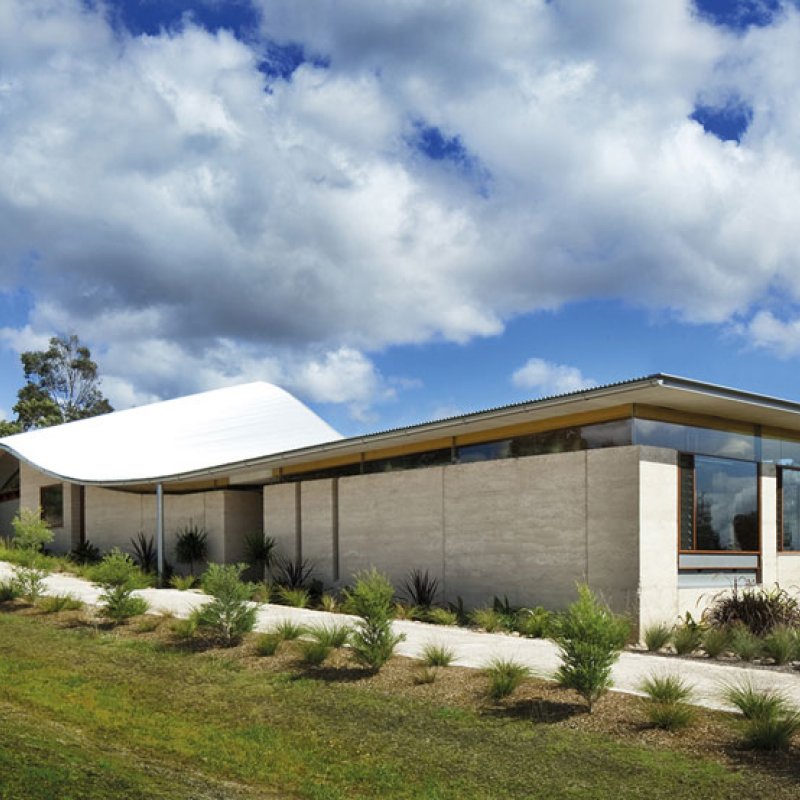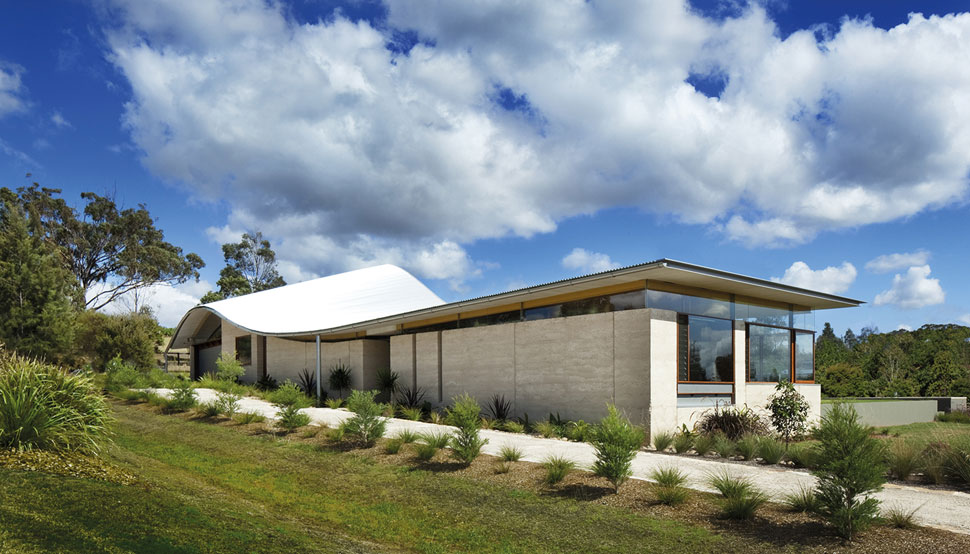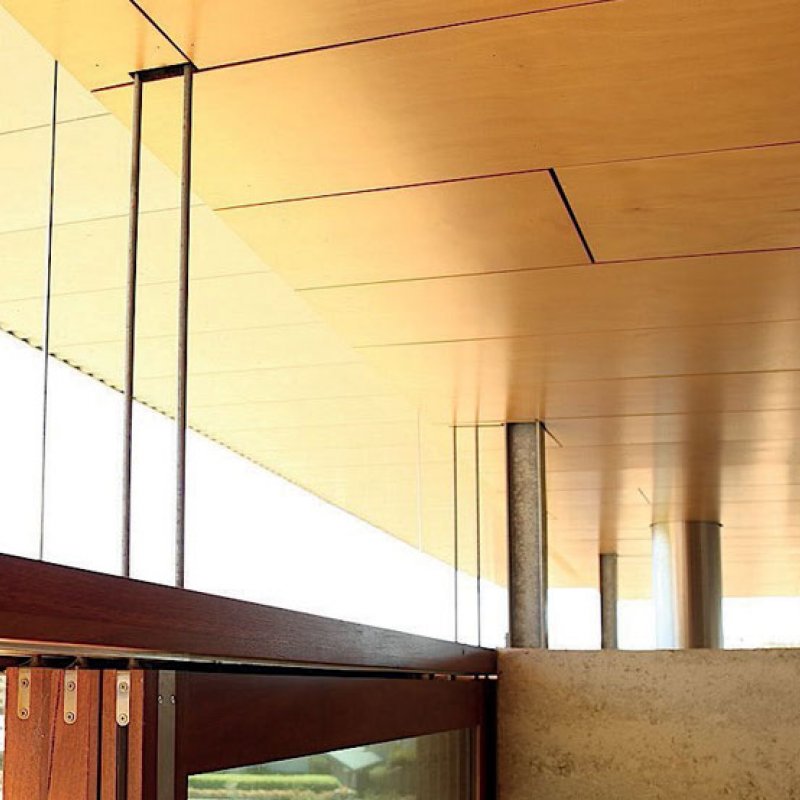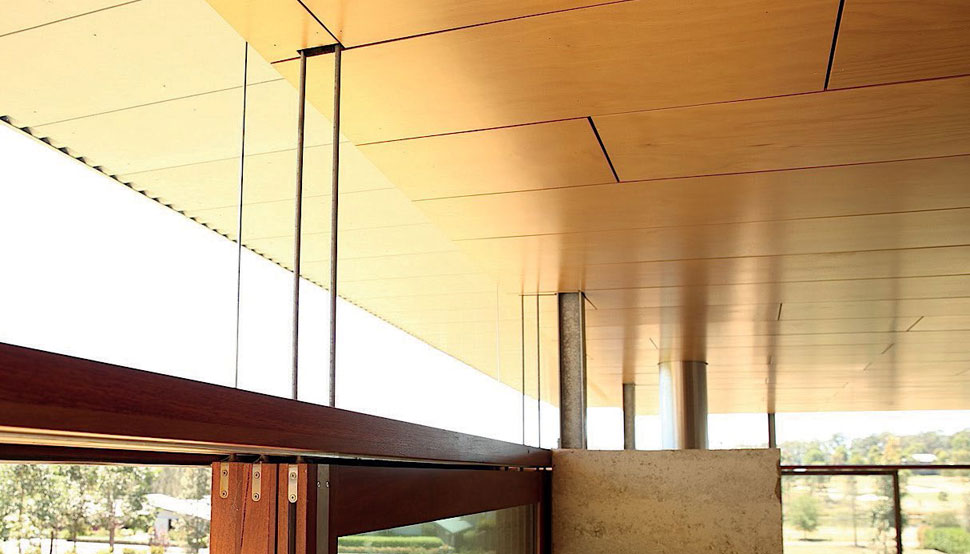Like the sweep of a conductor's baton to a languid piece of music, the curvaceous steel roofline of this James Stockwell-designed home dips and soars.
Used in this project
- Products
- Stramit Longspan®
- Materials
- COLORBOND® steel - Metallic finish
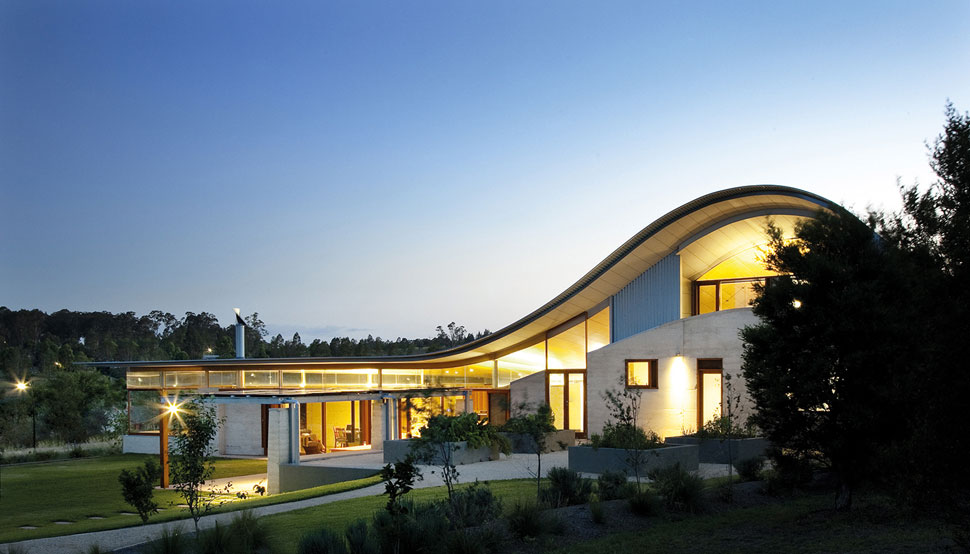
James Stockwell grew up on a farm near Albany, four hours from Perth, in a remoteness that breeds self-reliance. "Things would break on the farm; a feeder would snap in half and you'd reinforce it with something else," says Stockwell. "You learned that this much weight on that much steel was going to break it. So that kind of practical knowledge about materials has been invaluable as an architect," he says.
Stockwell's modest, almost simple way of describing this selection process belies a thoughtful approach and a gift for materiality and form which have seen the young architect win a swag of residential awards in recent years.
The clients' coda to the brief for this house was a request for 'an interesting roof'. It was this stipulation that posed the main design question of the project. "An architectural answer to that led to the stretching of the roof over a box form," says Stockwell.
In considering how to resolve the issue, he thought back to a drawing of an owl by Picasso which the artist completed in a single line, never taking his pen off the paper. That inspired memory results in a form which is more a beautiful gesture than a roof; like the sweep of a conductor's baton to a languid piece of music.
Stockwell made a 1:5 scale model of the project, reproducing the sine curve of the roof by simply bending a sheet of thin cardboard. It's a curve that he finds fascinating.
That simple curve is, paradoxically, a mathematical complexity – sine curves are in fact quite difficult to draw – so Stockwell found it easier to use a physical model, hand plotting the points off that before sending them to the shop drawer to import into the steel drawings.
Stockwell specified roofing made from COLORBOND® steel Axis® in a Metallic finish, in Stramit Longspan® profile, and reports that it was relatively easy to install. Indeed, the gentle sine curve of the roof allowed the project to be constructed using straight materials in short lengths, which reduced the complexity of the build and dispensed with having to get items purposefully bent.
The top and bottom of the roof were plotted as a series of points in space and the steel structure, made from prefabricated 100 UC and 200 UB steel members, was bolted together. The builder then placed the rafters and timber battens on top.
"The steel does the hard work of creating the shape and it does the cantilevering and the spanning. It's strong and stiff enough to make the roof quite low-profile – to make it slender and just floating through. It was also very good for the assembly because the installers could get the beams and columns here and bolt them together, and there was enough skill and technology in the shop drawings and the fabrication to pretty much take the hard work out of the assembly. On a project like this, you couldn't do it with anything else except steel beams."
Stockwell wanted to avoid cross-bracing the steel structure and so looked to his other material choice for support. The slender 100 UC steel columns were encased in rammed earth to stabilise them, with just their tops poking out of the thick walls. This sets up a beautiful juxtaposition between the fineness of the structural steel members and the solidity of the rammed earth, and further enhances the visual impression that the roof is about to take flight, as if held on by only a few threads of metal.
Steel is brilliant in tension and that is where it really comes into its own," Stockwell says. "It's quite clear when you look at the building that it's an object in tension, in other words that the creation of the flat plane into the vault sets up this magnificent tension and the decoupling of that from the rammed earth blocks – you've got the anchor to the earth, and the roof wanting to take off. The form of the sine curve, being a direct expression of material ductility, is brought to life by the properties of the steel.
Subtle details on this project include the steel tension rods made from 6mm galvanised steel which hold up the window and door heads. Unless you know to look for them they are easily missed, adding to the impression that the ceiling is levitating above the corner windows and the clerestory.
For Stockwell, his favourite aspect of the project is how one part of the building, the roof, can do multiple things. "Having a very simple form in a single gesture was the virtue of this roof."



